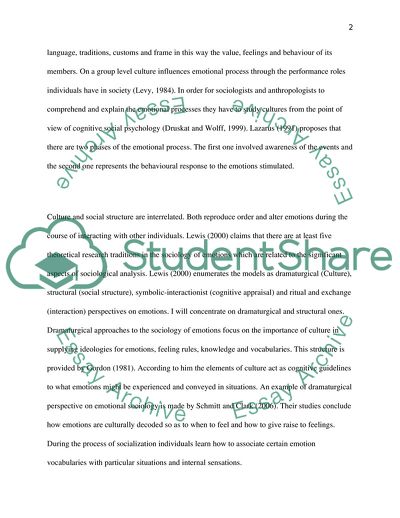Cite this document
(Cultural Norms Determine Emotional Essay Example | Topics and Well Written Essays - 1500 words, n.d.)
Cultural Norms Determine Emotional Essay Example | Topics and Well Written Essays - 1500 words. https://studentshare.org/culture/1732480-cultural-norms-determine-emotions-discuss-by-contrasting-the-dramaturgical-and-structural-perspectives-on-the-sociology-of-emotions
Cultural Norms Determine Emotional Essay Example | Topics and Well Written Essays - 1500 words. https://studentshare.org/culture/1732480-cultural-norms-determine-emotions-discuss-by-contrasting-the-dramaturgical-and-structural-perspectives-on-the-sociology-of-emotions
(Cultural Norms Determine Emotional Essay Example | Topics and Well Written Essays - 1500 Words)
Cultural Norms Determine Emotional Essay Example | Topics and Well Written Essays - 1500 Words. https://studentshare.org/culture/1732480-cultural-norms-determine-emotions-discuss-by-contrasting-the-dramaturgical-and-structural-perspectives-on-the-sociology-of-emotions.
Cultural Norms Determine Emotional Essay Example | Topics and Well Written Essays - 1500 Words. https://studentshare.org/culture/1732480-cultural-norms-determine-emotions-discuss-by-contrasting-the-dramaturgical-and-structural-perspectives-on-the-sociology-of-emotions.
“Cultural Norms Determine Emotional Essay Example | Topics and Well Written Essays - 1500 Words”. https://studentshare.org/culture/1732480-cultural-norms-determine-emotions-discuss-by-contrasting-the-dramaturgical-and-structural-perspectives-on-the-sociology-of-emotions.


